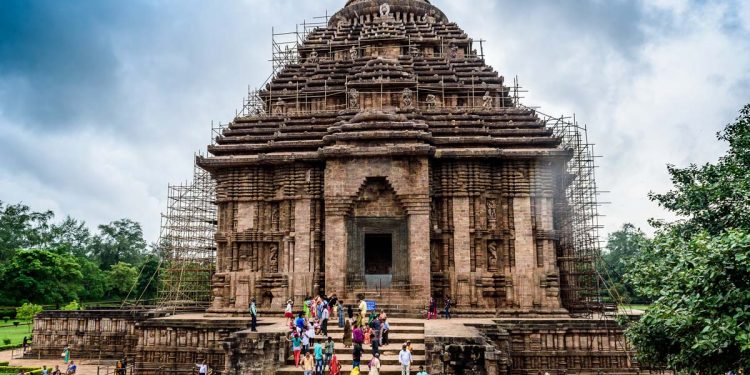Bhubaneswar: The Archaeological Survey of India (ASI) Thursday started removing sand from ‘Jagamohana’ (audience hall) of 13th century Sun temple at Konark in Odisha’s Puri district for better conservation.
Jagamohana, which is around 128 feet tall, is the principal surviving structure in the ruins. Nata Mandira (dance hall), and Bhoga Mandapa (dining hall) are among the other surviving structures.
Senior ASI officials performed ‘Bhoomi Pujan’ before commencing work.
British colonial rulers had filled river sand in the audience hall of the temple in 1903 to check further collapse of the structure, ASI said in a statement.
It is estimated that the entire process will take up to three years for completion, an official said.
The necessity to remove sand from the audience hall was felt for long and many experts, historians and engineers have opined in favour of it for better conservation of the Konark temple, a UNESCO World Heritage Site.
“Odisha engineers and IIT Madras are rendering technical advice to the ASI for the successful execution of work,” ASI superintending archaeologist Arun Mallick said.
“We have worked hard for the last two years to commence the project. After conferring with experts, including renowned archaeologists, engineers and architects through seminars, we have formulated a safe way to remove the sand,” he said.
The structural condition, foundation and internal geometry were studied with the help of modern technical devices, another official said.
The sanctum sanctorum of the temple, called ‘Vimana’ was 229 feet tall. It collapsed around 1837.
While there is no record suggesting how and when the structures in the temple complex collapsed, certain historical evidence suggests that the damage was caused between 16th and 17th centuries.
PTI







































